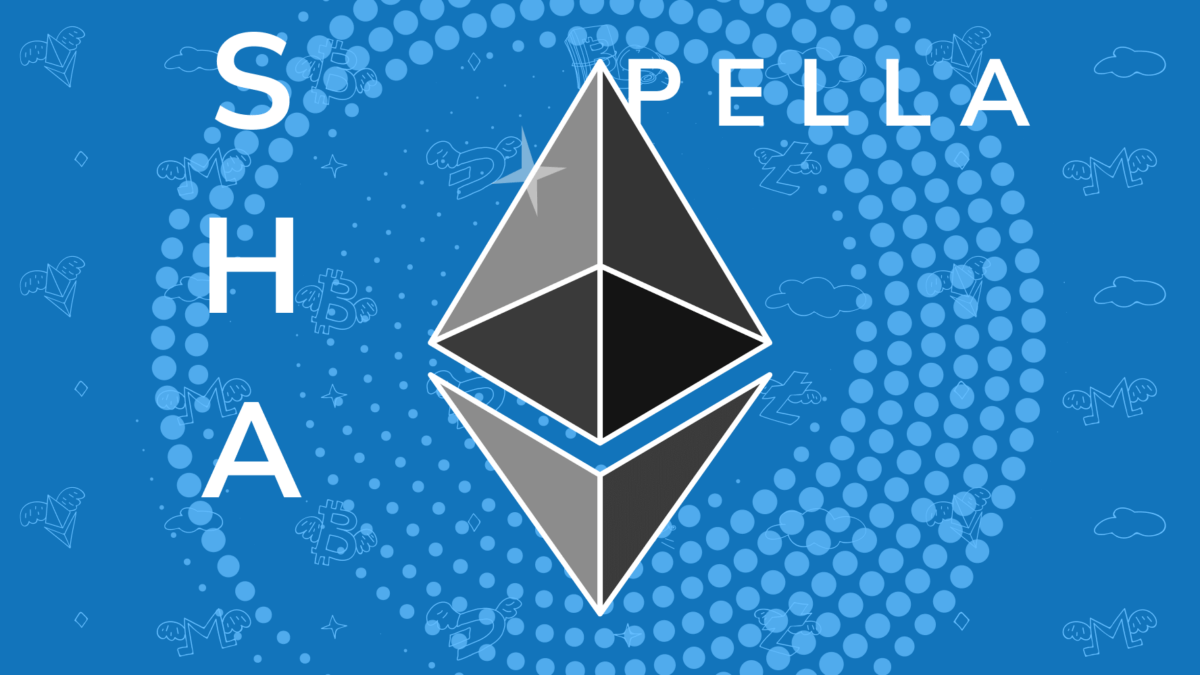On April 12th, Ethereum underwent a major upgrade called the Shanghai upgrade, which is also referred to as Shapella. The upgrade is considered one of the most important landmark developments for the Ethereum platform. In this article, we will examine what Shapella is, and how it changed the Ethereum platform.
What is Shapella?
The Shapella update marks Ethereum’s first major upgrade following The Merge. With Shapella, Ethereum’s validators now have the ability to withdraw the Ether they had previously staked in the network, a function that was previously unavailable. The prior major upgrade, The Merge, had transitioned Ethereum away from its Proof-of-Work operational model, with the aim of reducing the network’s consequent energy consumption.
The Merge had been generally successful, but it had not addressed the issue of unstaking for validators. Thankfully, the Shapella update has resolved this problem at last.
Ethereum has two layers: the execution layer and the consensus layer. The execution layer was the main layer before the transition to Proof-of-Stake, and the consensus layer was known as the Beacon Chain. The Shanghai upgrade occurred on the execution layer and introduced a withdrawal feature, while Capella was on the consensus layer and enabled full and partial withdrawals.
The upgrade combined both names to create “Shapella.” The name Shapella comes from Shanghai, the city that hosted the Devcon 2 conference, and Capella, the brightest star in the northern constellation of Auriga.
Since The Merge update, staking Ether into the Ethereum network has been a one-way process, with no option for unstaking. However, the Shapella upgrade aims to address this limitation by providing validators and other users of the Ethereum network with the opportunity to unstake their staked ethers. As a result, approximately 18 million Ethers, which were previously locked in the network, are now accessible to Ethereum network users.
In addition, the developers have planned minor updates to optimize certain network functions and transaction fees more efficiently. The Shapella upgrade has been tested successfully on the public testnet for several months.
How Do Withdrawals Work Now?
With the Shapella upgrade, Ethereum network users and validators can perform two types of withdrawals: partial and full withdrawals.
A partial withdrawal allows a validator to withdraw their accumulated rewards, but not the original 32 Ethers that were paid to establish the validator node.
On the other hand, a full withdrawal enables validators to withdraw all the Ether they’ve staked, including the 32 Ethers required to establish the validator node and all the block rewards accumulated by that amount. However, a full withdrawal requires the validator to shut down their validator node and exit the block validation process, which could negatively affect the network’s security. Moreover, those validators who want to complete a full withdrawal must send a message to the blockchain asking to be added to the queue because full withdrawals do not occur automatically.
The reason why the ability to withdraw network-locked Ether was unavailable during The Merge was to avoid unexpected problems and risks to the already complex upgrade. The Ethereum network relies on a sufficient amount of Ether locked in the network to maintain its security and proof-of-stake consensus mechanism. Delaying the unstaking allowed for a more controlled environment and a smoother transition to the proof-of-stake consensus mechanism.
Other Improvements of Shapella Update
Shapella upgrade also included some other Ethereum Improvement Proposals (EIPs). These proposed improvements were aimed at reducing gas fees during periods of very high network congestion and activity.
One of these improvements, EIP-3651, targets reducing gas costs related to maximal Extractable Value payments when accessing the COINBASE address. In this context, COINBASE refers to a developer solution for receiving new tokens, not the well-known US-based exchange.
Another proposal, EIP-3855, intends to introduce a new instruction that places the constant value of 0 onto the stack. This change aims to reduce gas costs, particularly for developers. Similarly, EIP-3860 and EIP-6049 aim to decrease fees in other circumstances.
Final thoughts
In conclusion, the Shapella upgrade marks a significant milestone for Ethereum’s ongoing journey towards improving its security, decentralization, and scalability. The upgrade is particularly noteworthy for its ability to alleviate a substantial burden on validators, while also providing greater clarity around the network’s state by enabling validators to easily withdraw their stake. With these improvements, Ethereum is poised to continue its evolution as a leading blockchain platform with an increasingly robust and efficient infrastructure. As the broader crypto landscape continues to evolve, Ethereum’s focus on innovation and continual improvement will be critical to its long-term success.
